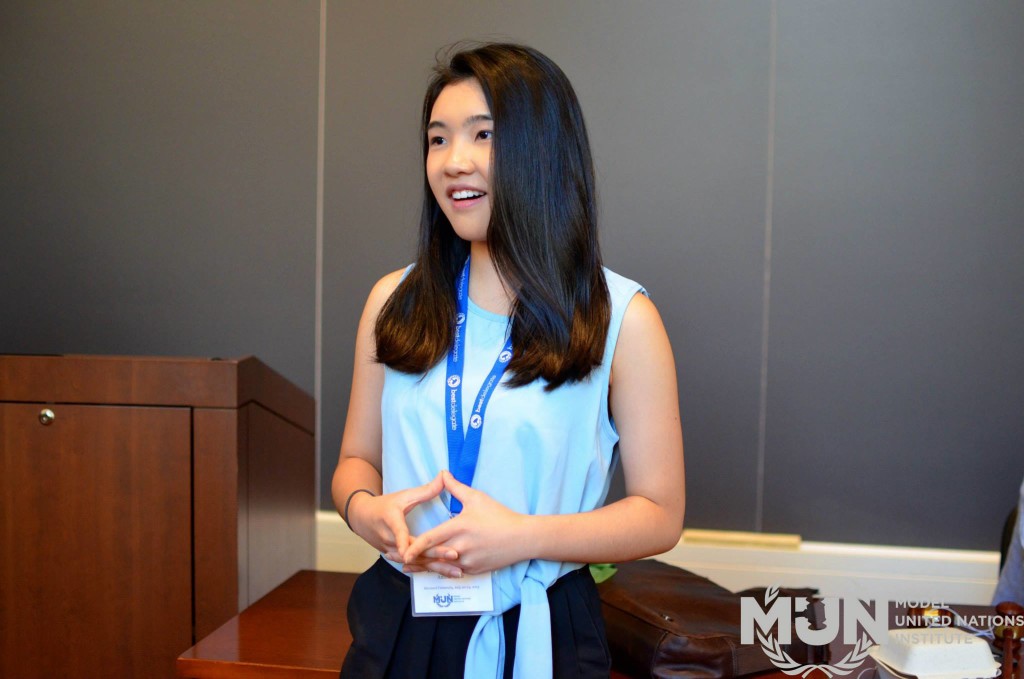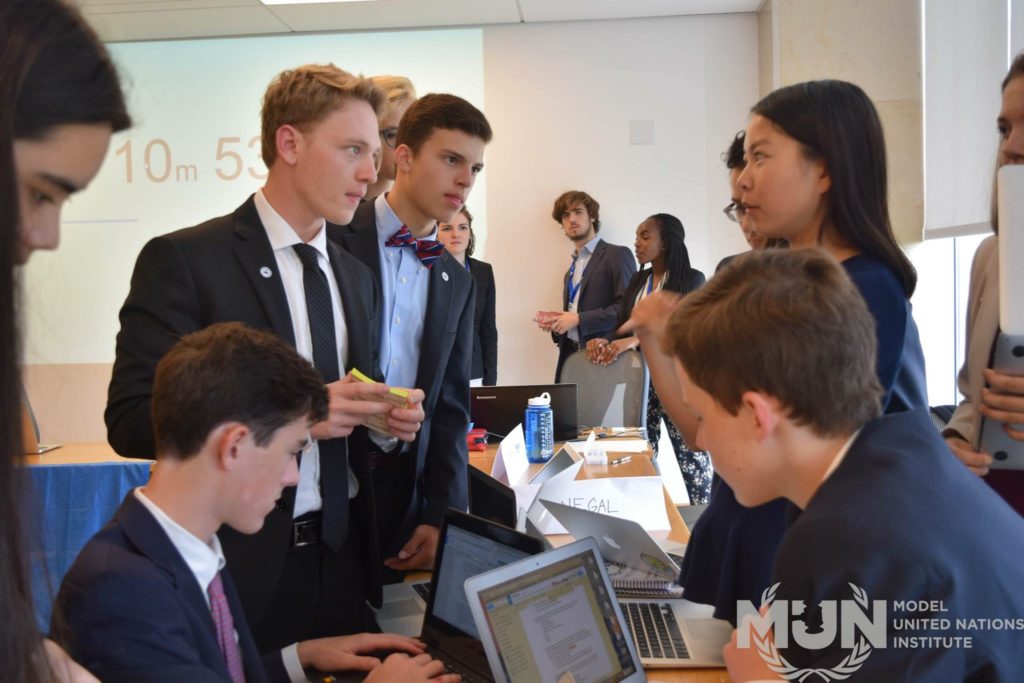
Strategy. Structure. Style. These high-level elements of Model United Nations were a defining feature of my summer at the Model United Nations Institute in 2017, when I participated in the Ambassador program. Whether you’re devising strategies to achieve your committee goals or improving the structure of your speeches and resolutions, being aware of delegate styles can be incredibly valuable and was one of my biggest takeaways from a week packed with practical tips and tricks for success.
As a Model UN delegate, you likely have developed your own style of debate and leadership. However, you’ll encounter a variety of different personalities in any committee. It’s beneficial to learn about the styles mentioned below, not only to determine and refine your own, but to figure out other delegates’ as you navigate sessions of debate and negotiation.
Let’s meet the five main delegates that you are sure to encounter in a Model UN committee:
- Competitive Delegates
These delegates are likely to assert their policies and solutions in committee, crafting detailed and strong resolutions. Their main goal is getting what they want, even if they end up excluding other delegates as a result. Excellent negotiators and strong leaders, these delegates are often at the helm of what is viewed as the “dominating” caucusing bloc.
- Collaborative Delegates
These delegates are equally likely to strongly assert their policies and solutions through resolutions and speeches. However, they are more willing to cooperate with other delegates and include their ideas. Although this strategy may lead to strong, multifaceted resolutions, it can also cause a longer writing process due to the time spent coordinating others. These delegates are often perceived as diplomatic leaders.
- Compromising Delegates
Although they are also likely to assert their policies and solutions, these delegates tend to be willing to support working papers or initiatives even that include all of their ideas. They want the committee to operate productively, so their primary aim is writing and passing resolutions regardless of whether they agree with them completely or they are in the strongest possible form.
- Accommodating Delegates
These delegates do not have strong positions on their policies, and are willing to join any caucusing bloc in order to write and pass resolutions. As we learned at the Model UN Institute, they tend to either be “dominated” by competitive delegates or “influenced” by collaborative delegates.
- Avoiding Delegates
These delegates can express avoidance in a variety of ways: they may not want any resolutions to pass at all, or they might sponsor a resolution by themselves instead of aligning with a caucus bloc. They may even choose not to participate in debate and caucusing at all!
After reading these descriptions, you may find that you tend towards a certain style (I personally find that being a collaborative delegate comes naturally to me). However, it’s important to recognize early in committee that your chair might favor a particular style, as well. You can try adopting a style that suits your committee dynamic and helps you achieve your goals. In the past, I’ve adapted to be a competitive type to stand out in committees full of power delegates. I’ve also been more compromising in unproductive committees where I wanted to make sure resolutions got written and passed before the end. As you can see, being aware of different Model UN styles can help you head into conferences prepared for any scenario!
Another excellent application for these styles is in character based committees, where you are representing a real-life figure who has their own complex personality that you have to portray. If you are assigned Malala Yousafzai in a committee on gender equality, adapting a collaborative style can help you represent her accurately and skillfully. However, if you are representing Vladimir Putin, a competitive delegate strategy may be more appropriate.
Whether you already know your style, have identified a particular one that you want to strive for, or want to strategically embrace a style that will best fit your committee or character, utilizing this can help you achieve your Model UN goals, establish yourself as a leader, and succeed in any committee.

For more advanced delegate tips and strategies like this one, including more information on the intricacies of delegate styles, I highly recommend the Ambassador program at the Model UN Institute. Learning to take my skills to the next level and develop my research, writing, public speaking, and leadership abilities during my summer as an Ambassador has proven invaluable on the high school Model UN circuit I have competed in ever since. Registration for the Ambassador program, as well as other Model UN Institute trainings, is live now at https://mun.bestdelegate.com/programs-at-a-glance/.








